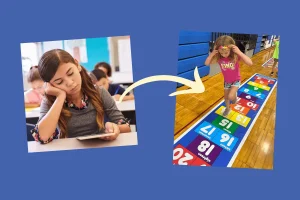
Our Product Pick

This colorful floor mat or sticker includes the numbers zero through ten in numerals, words, and grouped symbols for building fundamental number literacy skills.
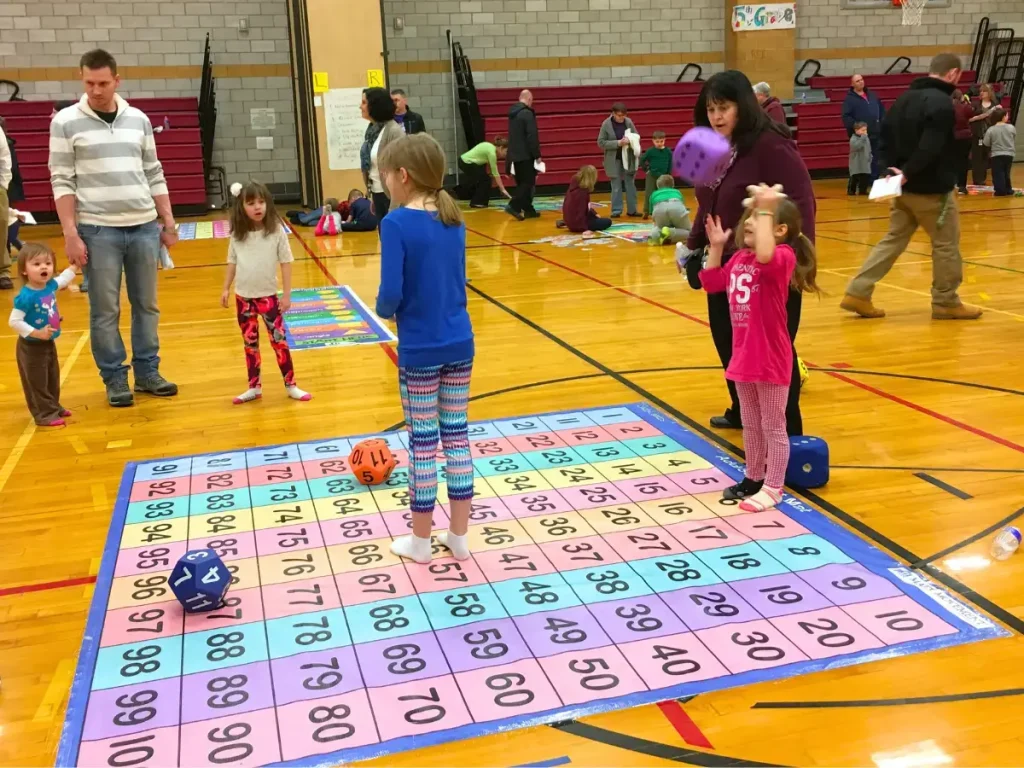
There’s no denying that America has been experiencing a math crisis. Developing a kinesthetic math curriculum can transform how elementary students learn. Doing this can lead to increased engagement, comprehension, and enthusiasm.
Kinesthetic learning emphasizes physical activity and hands-on methods. It’s ideal for young learners who thrive in interactive environments. Keep reading to learn how this approach can boost student math scores, support a school improvement plan, and enhance math intervention resources.
Kinesthetic learning focuses on movement and physical activity. It allows students to understand abstract math concepts in a concrete way – by experiencing them through movement.
Such a method addresses the needs of tactile learners. It enhances retention by engaging both the body and the mind.
For instance, do you know what happens when students walk along a large number line to solve addition and subtraction problems? They internalize these concepts more effectively than through traditional, sedentary instruction.
Activities like the following can increase understanding and confidence:
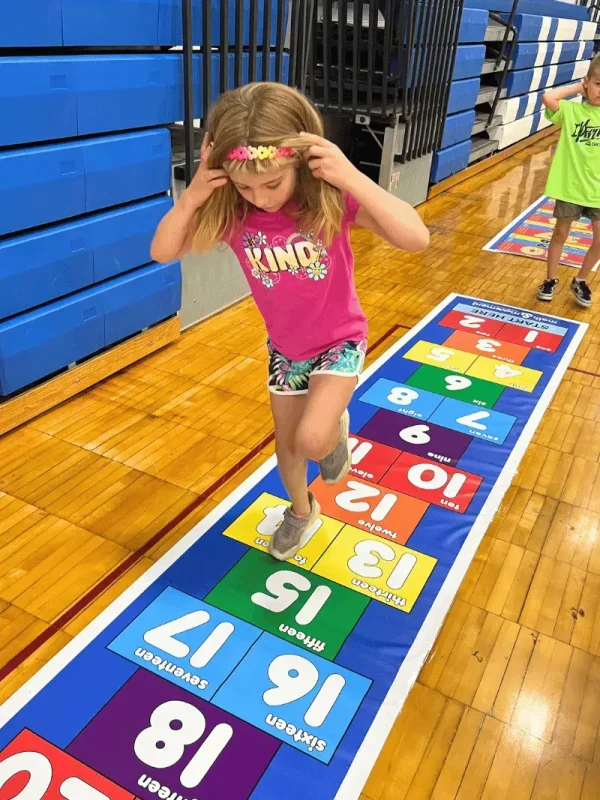
Kinesthetic learning also boosts student engagement. Physical activities break the monotony of sitting at desks. Instead, movement creates a dynamic classroom atmosphere that encourages participation and collaboration.
Schools incorporating kinesthetic learning see increased attendance, test scores, and enthusiasm for math. Success early in elementary school lays the foundation for long-term academic success.
Movement isn't just for recess
Want to get started with movement-based learning right now? Enter your email to get our training manual with over 250 active math movements. No materials necessary!
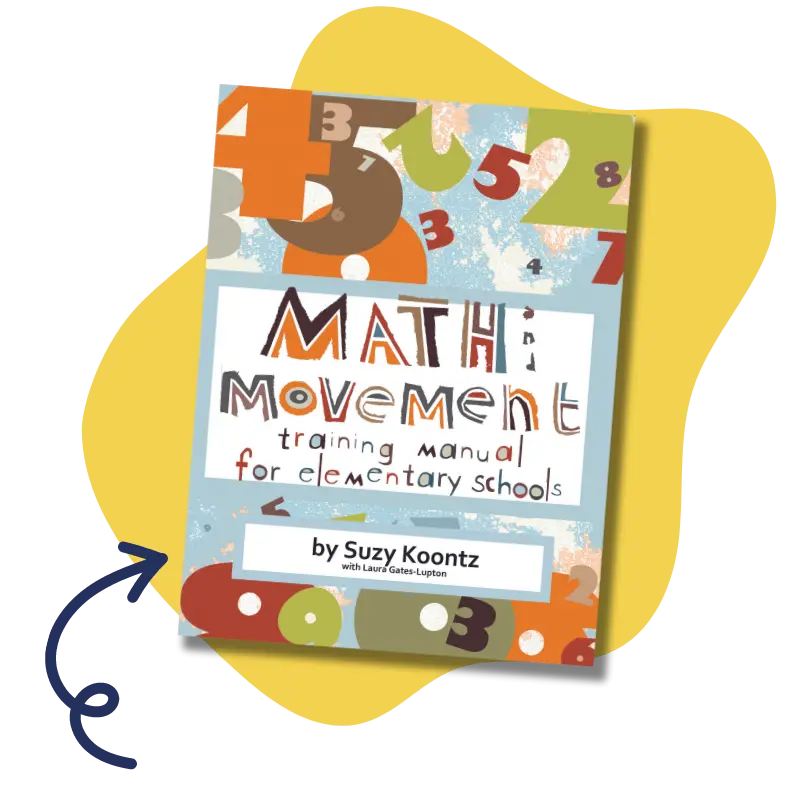
See how simple adding movement can be!
A successful kinesthetic math curriculum has several main elements. It calls for a thoughtful blend of the following:
Integrating movement into mathematics lessons helps students connect abstract concepts to physical actions.
For example, a third-grade class learning multiplication could jump on the Multiplication Hop floor mat.
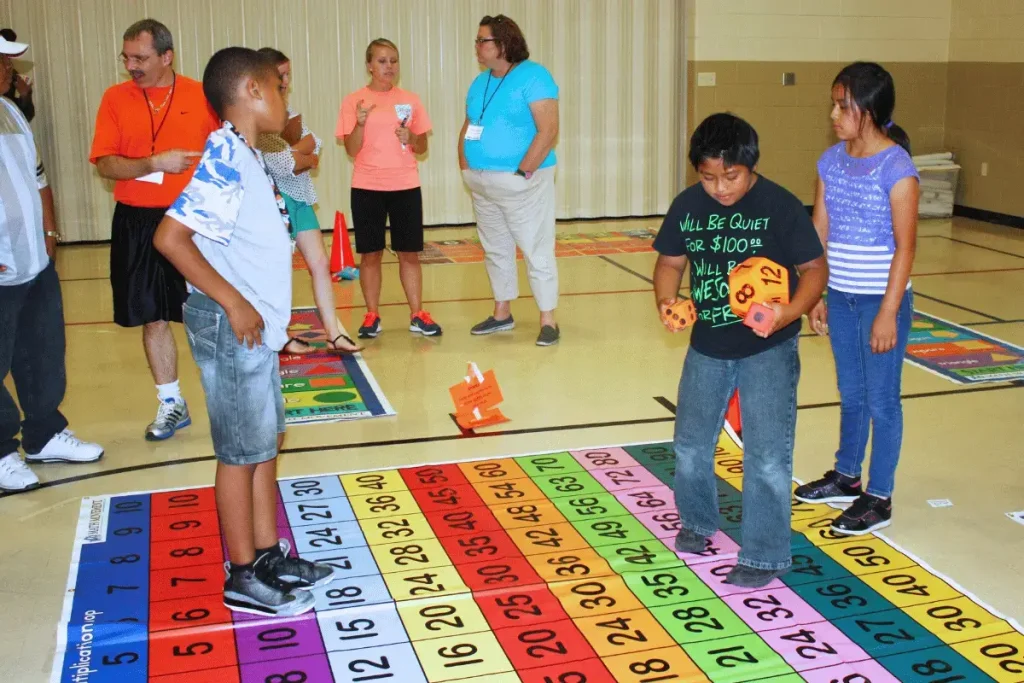
Similarly, second graders learning analog time might use their bodies as hour and minute hands on the Clock Hop floor mat.
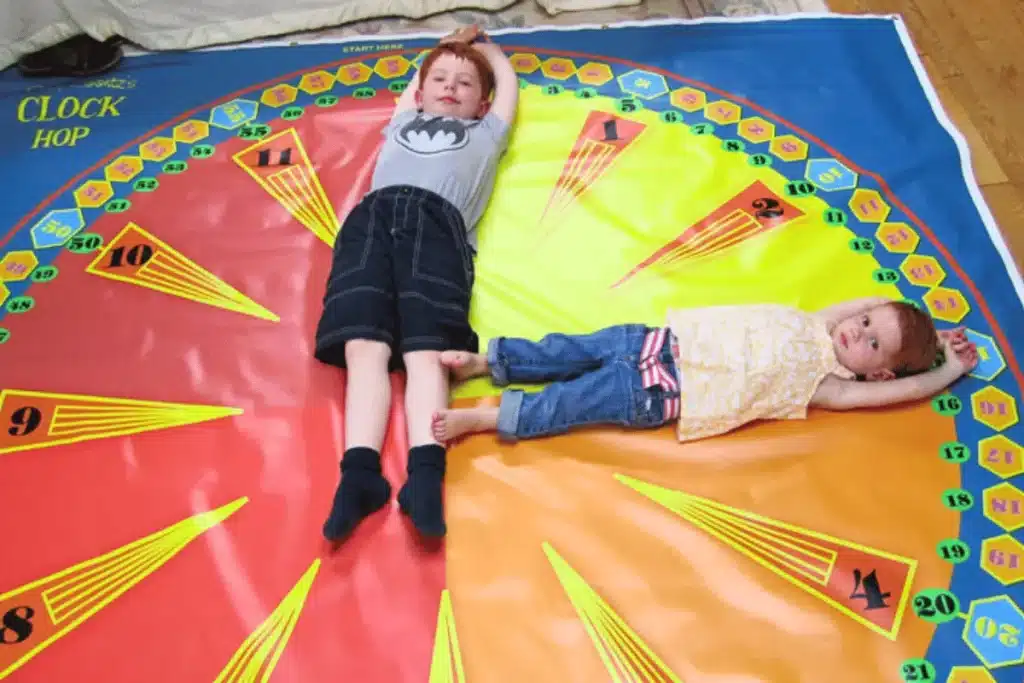
The Math & Movement program provides innovative kinesthetic learning examples. We offer interactive learning tools, such as floor mats and stickers, that transform math lessons into fun and engaging physical activities. These materials help educators incorporate movement-based learning into the classroom.
A well-rounded mathematics lesson plan balances kinesthetic activities with direct instruction.
For instance, a lesson on fractions might begin with an explanation of halves and quarters on the whiteboard. Next, students could complete an activity on the Equivalent Fractions Hop. Finally, the lesson can end with a discussion to solidify understanding.
Structured plans help teachers align their teaching with curriculum standards. At the same time, it provides flexibility to adapt activities based on students’ needs.
Kinesthetic methods can also play a major role in math intervention programs and progress monitoring. Activities that involve movement allow students to approach challenging concepts from a new perspective. It often unlocks an understanding where traditional methods have failed.
Incorporating math progress monitoring into a kinesthetic curriculum helps teachers assess student improvement. From there, they can adjust teaching strategies. Tools like performance trackers and reflection journals can give deeper insights.
Begin by pinpointing areas where movement can enhance your current math instruction. Concepts like the following can be taught with kinesthetic teaching strategies:
For example, students learning addition could hop forward on a large number line to visually and physically reinforce the concept. (They can do this on Math & Movement floor mats, like the Number Line to 10 Mat!)

This colorful floor mat or sticker includes the numbers zero through ten in numerals, words, and grouped symbols for building fundamental number literacy skills.
Equipping classrooms with high-quality teaching supplies is essential for a successful kinesthetic math curriculum. Largescale number lines, manipulatives, and interactive posters are among the most effective tools.
Math & Movement offers a wide range of teacher supplies designed to bring kinesthetic learning to every classroom. We have a mat or sticker for just about every elementary math lesson you can think of!
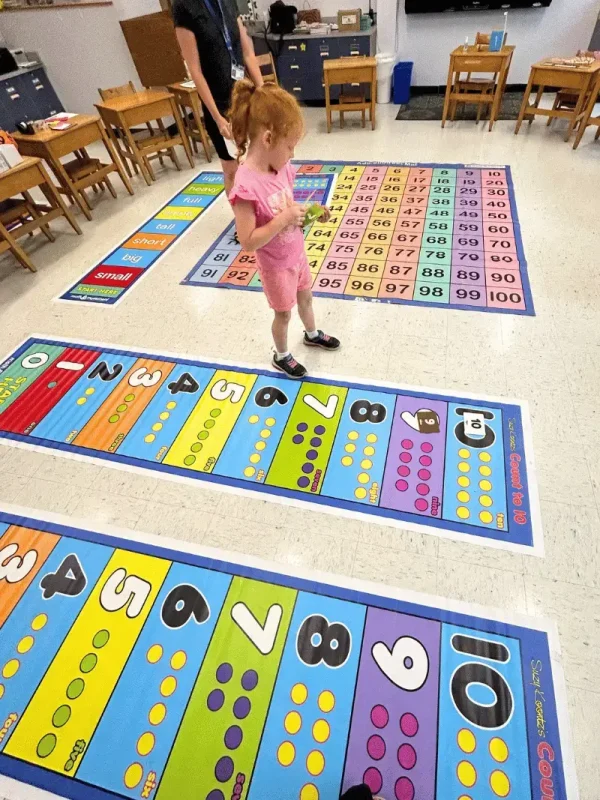
Combining kinesthetic activities with digital tools can create a more comprehensive learning experience. Interactive whiteboards and math apps on the computer complement physical activities and provide a balance.
Gamified activities are an excellent way to increase student engagement. Encourage teamwork with relay races that involve solving math problems at each station or scavenger hunts with math puzzles. These activities make math enjoyable and nurture critical thinking skills.
Did you know that Math & Movement has an entire online activity database that goes along with our products? We do! Educators can find lesson plans, worksheets, and games to go with their specific Math & Movement materials.
Teachers can share ideas and develop collaborative lesson plans. They can also participate in professional development sessions focused on kinesthetic teaching strategies. A collective effort ensures consistency and maximizes the benefits for students.
Math & Movement offers multiple webinars about kinesthetic learning! Teachers can choose one that applies to their grade level and subject and earn professional development hours.
Adopting a kinesthetic math curriculum has far-reaching benefits for both students and schools.
For students, the approach improves comprehension by allowing them to experience math concepts physically. Physical activity also reduces math anxiety and builds self-efficacy. The hands-on nature of kinesthetic learning often leads to better performance on standardized tests as well.
For schools, implementing kinesthetic learning supports improvement plans by enhancing engagement and attendance. Teachers also benefit from the dynamic nature of these methods. It reinvigorates their passion for teaching and encourages creativity in lesson planning.
In fact, by entering your email below, you’ll receive a FREE copy of our Math & Movement Training Manual. This PDF includes over 250 movement ideas for your class that can be done without any additional materials! Introduce kinesthetic learning methods with just your body and imagination!
Kinesthetic activities can be extended to after-school programs, too. Movement offers extra support for students who need more time to master math concepts. It also allows students to burn off some energy and have fun after the school day. Hands-on activities will encourage participation.
Math intervention curriculums that incorporate kinesthetic elements are particularly effective in addressing learning gaps. Programs like Math & Movement offer targeted activities designed to help struggling learners succeed. Even adding short physical activities to your intervention resources can help students improve their math skills.
When it comes to creating a kinesthetic math curriculum, Math & Movement is an invaluable resource. Our evidence-based program is designed to boost achievement and foster a love for learning. Our comprehensive resources allow schools to integrate movement-based learning into their curriculum and make learning more fun and effective.
We offer tried and true kinesthetic learning solutions for schools across the US. Our K-12 clients trust our data, research, and decades of collective teaching experience.
Ready to get started? Contact us today.
Movement isn't just for recess
Want to get started with movement-based learning right now? Enter your email to get our training manual with over 250 active math movements. No materials necessary!
Subscribe to Our Newsletter
We never share or sell your data.
Please leave your email and a quick note for us. We will get back to you soon! In the meantime, here are answers to some of our most common questions:
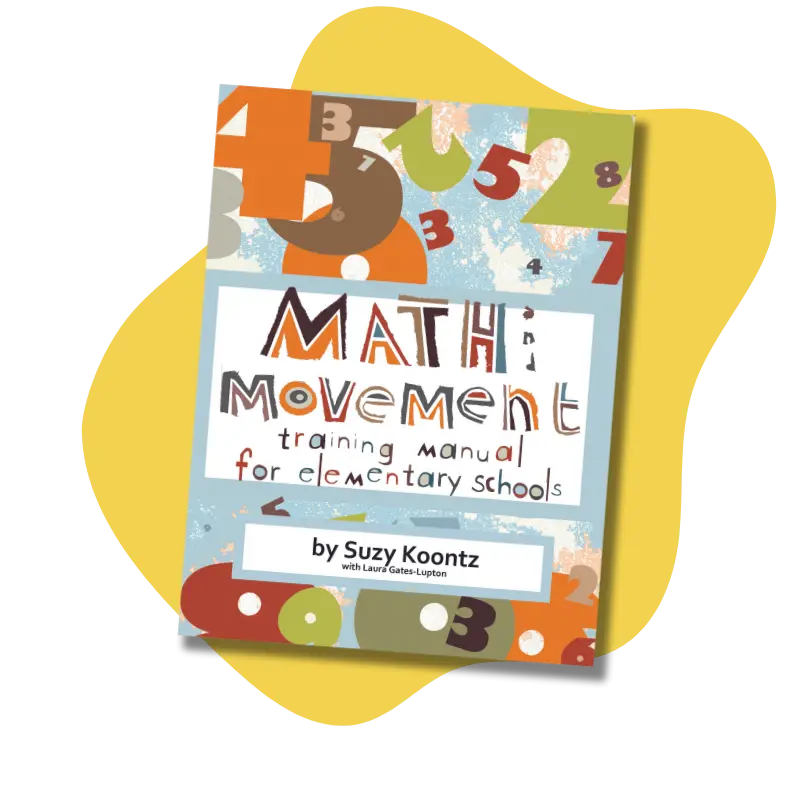
Enter your email to get our training manual with over 250 active math movements. No materials necessary!
We never share or sell your data.